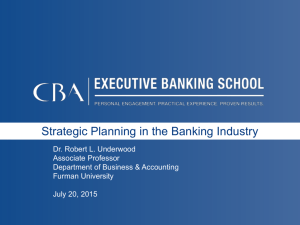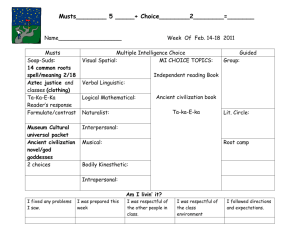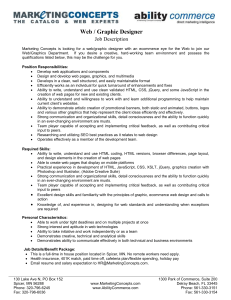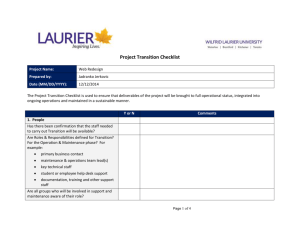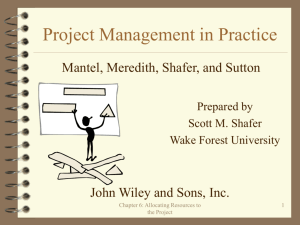K.T. Decision Analysis K.T. DA Example
advertisement
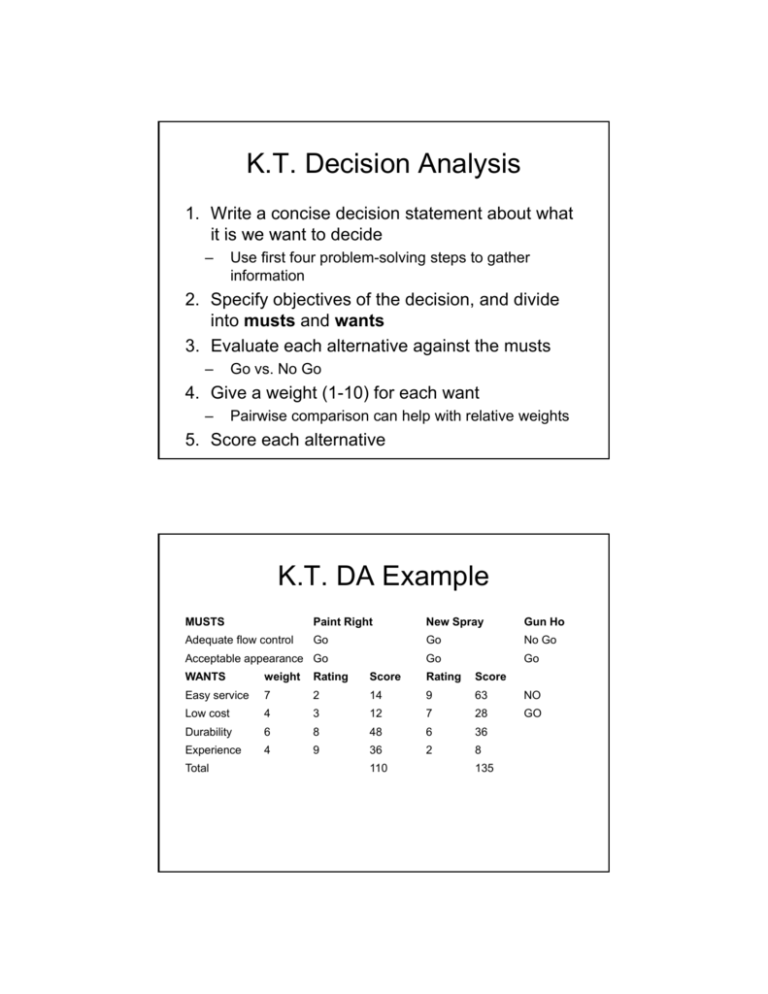
K.T. Decision Analysis 1. Write a concise decision statement about what it is we want to decide – Use first four problem-solving steps to gather information 2. Specify objectives of the decision, and divide into musts and wants 3 Evaluate each alternative against the musts 3. – Go vs. No Go 4. Give a weight (1-10) for each want – Pairwise comparison can help with relative weights 5. Score each alternative K.T. DA Example MUSTS Paint Right New Spray Gun Ho Adequate flow control Go Go No Go Acceptable appearance Go Go Go WANTS weight Rating Score Rating Score Easy service 7 2 14 9 63 NO Low cost 4 3 12 7 28 GO Durability 6 8 48 6 36 Experience 4 9 36 2 Total 110 8 135 K.T. Potential Problem Analysis • Analyze potential solutions to see if there are potential problems that could arise • Ones not analyzed in prior steps • Particularly appropriate for analyzing safety issues K.T. PPA Example: Buying Car Problem Possible Cause Preventive Action Contingency Plan Improper alignment Car in accident g Check alignment Don’t buyy Body condition Car in accident; body rusted out Inspect body for rust Offer lower price Car in flood Check for mold/ hidden rust Offer lower price Suspension problems Hard use, poor maintenance Check tires Require fixes Leaking fluids Poor maintenance Inspect Require fixes Odometer incorrect Tampering/broken Look for signs, check title Offer lower price Car ready to fall apart Poor maintenance Look for signs Don’t buy Implementing Solution • • • • Approval Pl Planning i Carry through Follow up Approval • From authorities or clients • Make M k a proposall – All of the presentation issues apply – Must especially focus on the client’s goals Planning Techniques • • • • Gantt chart for allocating resources, time D l Deployment t chart h t Critical path analysis Allocating/budgeting resources Carry Through and Follow Up • Carry Through – Actual management of the implementation • Follow Up – This refers to monitoring process and adjusting as necessary – Deadlines, budgets, relevance Evaluation • Evaluation should be an ongoing process throughout life of the project • Each phase of the project should have a review to verify that goals of the phase were accomplished • This might cause adjustments to future plans • For F each h decision, d i i carry outt a PPA b before f implementing the solution Evaluation Checklist • • • • • • • • • • Have you challenged the information and assumptions? Does the solution solve the real problem? Is the problem permanently solved? Or is this a patch? Does the solution have impact? Have all consequences of the solution been considered? Have you argued both sides, positive and negative? Has the solution accomplished all that it could? Is the solution economically efficient and justifiable? Have the “customers” bought in? Does solution cause problems (environment, safety)? Ethics Checklist • Is it legal? Does it violate the law, or organizational policy? • Is it balanced? Is it fair to all concerned in short and long term? Is it a win-win solution? • How will it make me feel about myself? Will it make me proud? How would I feel if it were published in the newspaper? If my family knew? Multi-dimensional Problems • Some problems ask to find an optimal solution. – Ex: Buy the best computer under $1000 • There may be multiple factors, and they may interact. – Ex: CPU, memory, disk, graphics card • The goal can be thought of as finding the best point in a multi multi-dimensional dimensional space, space where each point has a value – Ex: For some combination of CPU, memory size, disk drive, and graphics card, what is the performance? – Constraint: Cost < $1000 Experimental Design • There might be so many factors, and possible values for the factors factors, that you can’t can t afford to test every combination • Experimental design refers to selecting specific combinations of factor values to test • Ex: Test the high and low values for each factor, in combination. combination – With 4 factors, that is 16 experiments Statistics • Often you wish to get a measure of some performance metric from either a random event or a given population – Ex: Mean height of college students – Ex: Mean performance of a given computer configuration • Any given event instance is not the true mean – It is a random variable with some distribution – You need to figure out how to get a reasonable estimate for the mean Estimating Issues • Sample the population – How to sample – How many to sample – How confident you are about the result • Hypothesis testing – Is one mean bigger than another? – With what probability? • These are the things that a statistics course attempts to teach you
